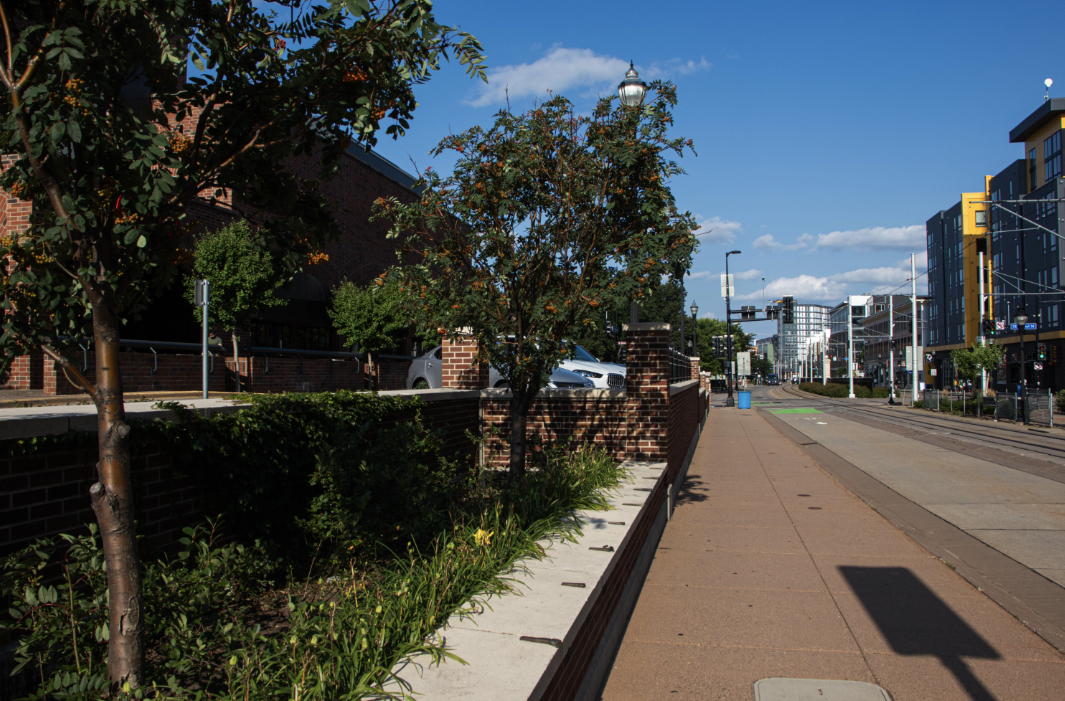Minneapolis residents in some areas of the city can apply for a free tree to be planted in their yard through the Minneapolis Department of Health’s free city trees program, an effort to increase the city’s tree canopy.
Residential property owners can apply for a free tree through the program’s website. The city partners with Tree Trust, a local landscaping company, to help property owners pick out a tree species for their yard and plant it for them, said Sydney Schaaf, the city trees program coordinator for the Minneapolis Department of Health.
Those living in green-zone neighborhoods, identified as environmental justice areas by the city, are eligible for the program, Schaaf said. These areas have high levels of pollution and experience racial, political and economic marginalization.
“There were a lot of different factors taken into account to establish these areas, but one of them that was included was tree canopy,” Schaaf said.
Dustin Ellis, the acting forestry supervisor for Hennepin County, said areas with lots of buildings and asphalt often do not have a healthy tree canopy, have high population density and high poverty rates. These communities are often a majority Black, Indigenous and people of color.
“It’s an equity issue when suburbs are much more built up with trees and natural areas,” Ellis said.
Areas without a sufficient tree canopy get very hot due to lack of shade, meaning fewer people want to spend time outdoors, Ellis said. Trees also help manage water run-off, sequester carbon dioxide and create habitats for local wildlife.
The free trees are specifically for residents of the two green zones in the city — the northside green zone and the southside green zone, according to Schaaf.
The southside includes portions of the Cedar-Riverside and Phillips neighborhoods. The northside includes portions of the St. Anthony West, Hawthorne and Sheridan neighborhoods
“We know that private property is the largest opportunity to increase tree canopy in the city,” Schaaf said.
Trees in cities are under more pressure from different threats or stressors than trees in forests or other natural environments, said Alicia Coleman, assistant professor in Urban and Community Forestry. These stressors can include dense amounts of pavement and sidewalk, water run-off that picks up nutrients and debris and diseases or invasive insects.
“Minneapolis is like any city and will experience the latest invasive species outbreak,” Coleman said. “Unfortunately, no city is immune in that way.”
One of the key ways people and governments can protect urban tree canopies is by implementing a system that requires new trees are planted after some are removed, Coleman said.
“A sustainable urban forest has different stage classes of trees,” Coleman said. “Tree planting strategies are always a great way for people to be sustaining the health and diversity, or at least the age diversity of an urban forest.”
It is important to pick species of trees that withstand its environment, Coleman said. The University’s Urban Forestry Outreach and Research website has information on how to pick trees fit for an environment and how to properly care for them.
The city also has programs that offer inexpensive trees to businesses, nonprofits and residents, regardless of whether they are located in a green zone, Schaaf said.
“Our largest program is probably our residential tree sale,” Schaaf said. “Residents can order up to three trees per address for $30 each.”
Sign-up for the next tree sale opens on Aug. 4, Schaaf said. Through this sale, the city aims to plant over 2,000 trees this fall.
Schaaf said they always encourage rental property owners to apply for tree plantings and help renters who are interested in the program get in contact with their property owners.
“We also always offer to reach out to the rental property owner and talk to them to answer any questions,” Schaaf said.















Brian
Aug 1, 2024 at 7:39 pm
Just for clarity, Tree Trust is a nonprofit. They have a division called Tree Trust Landscape Services, which is a social enterprise that helps support the nonprofit.